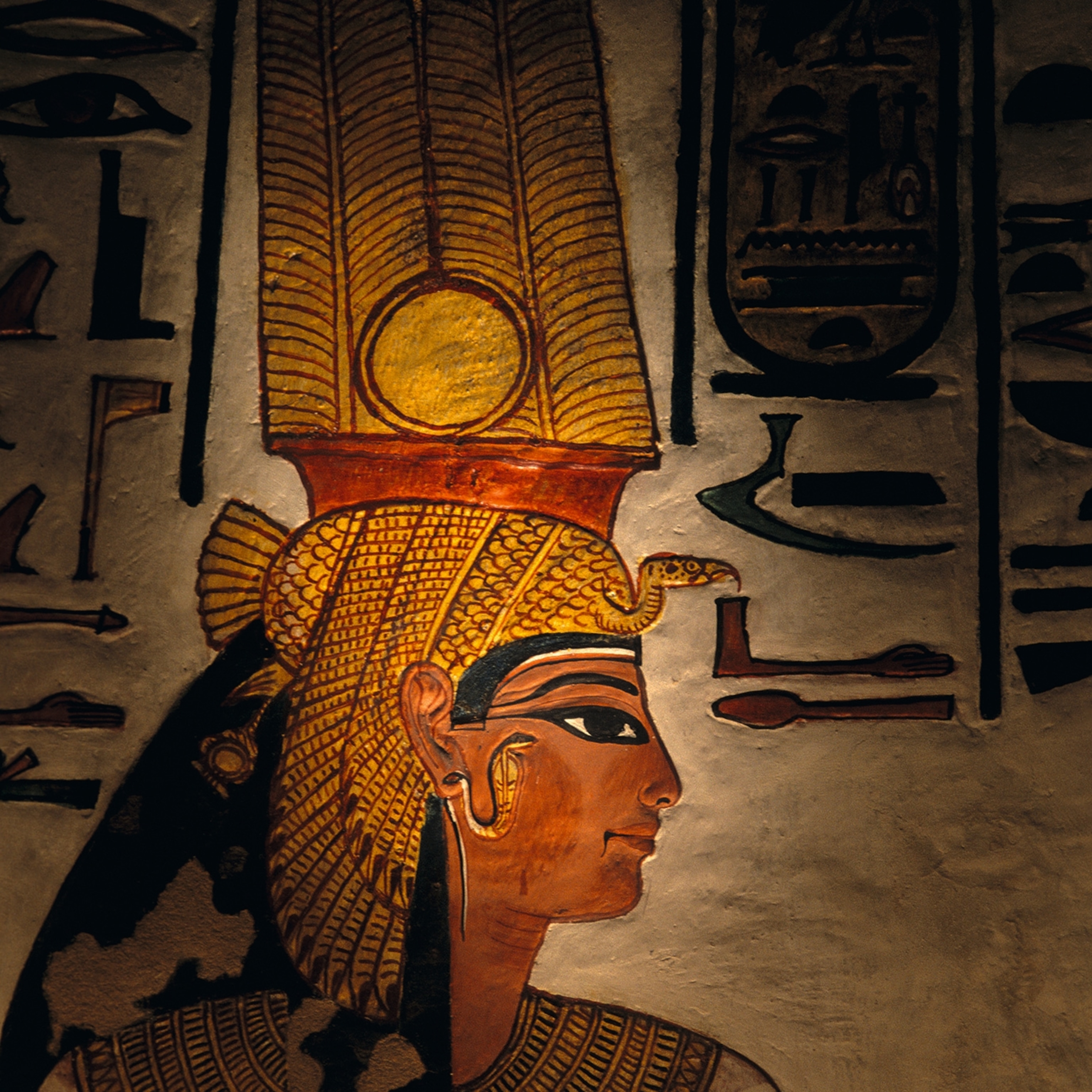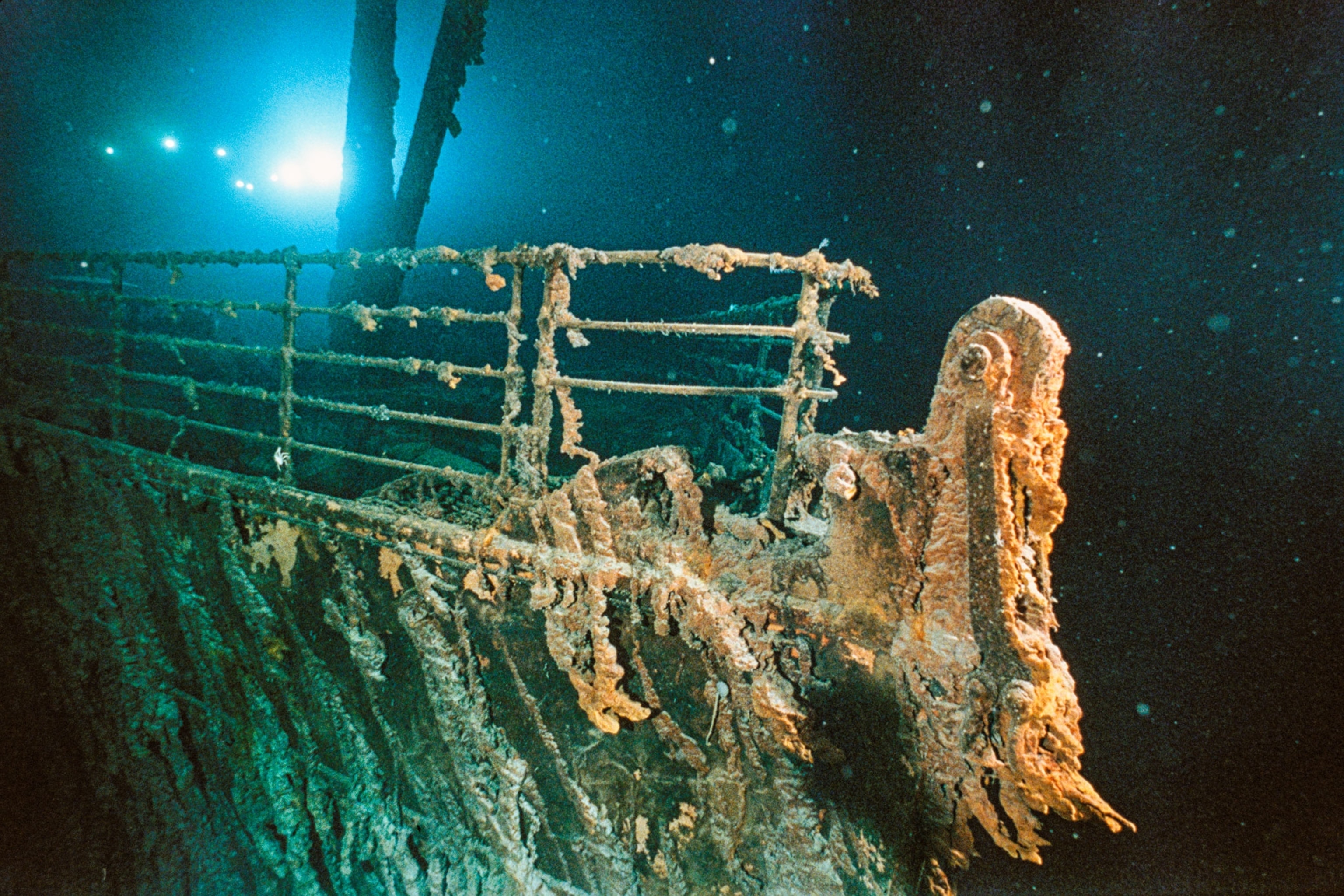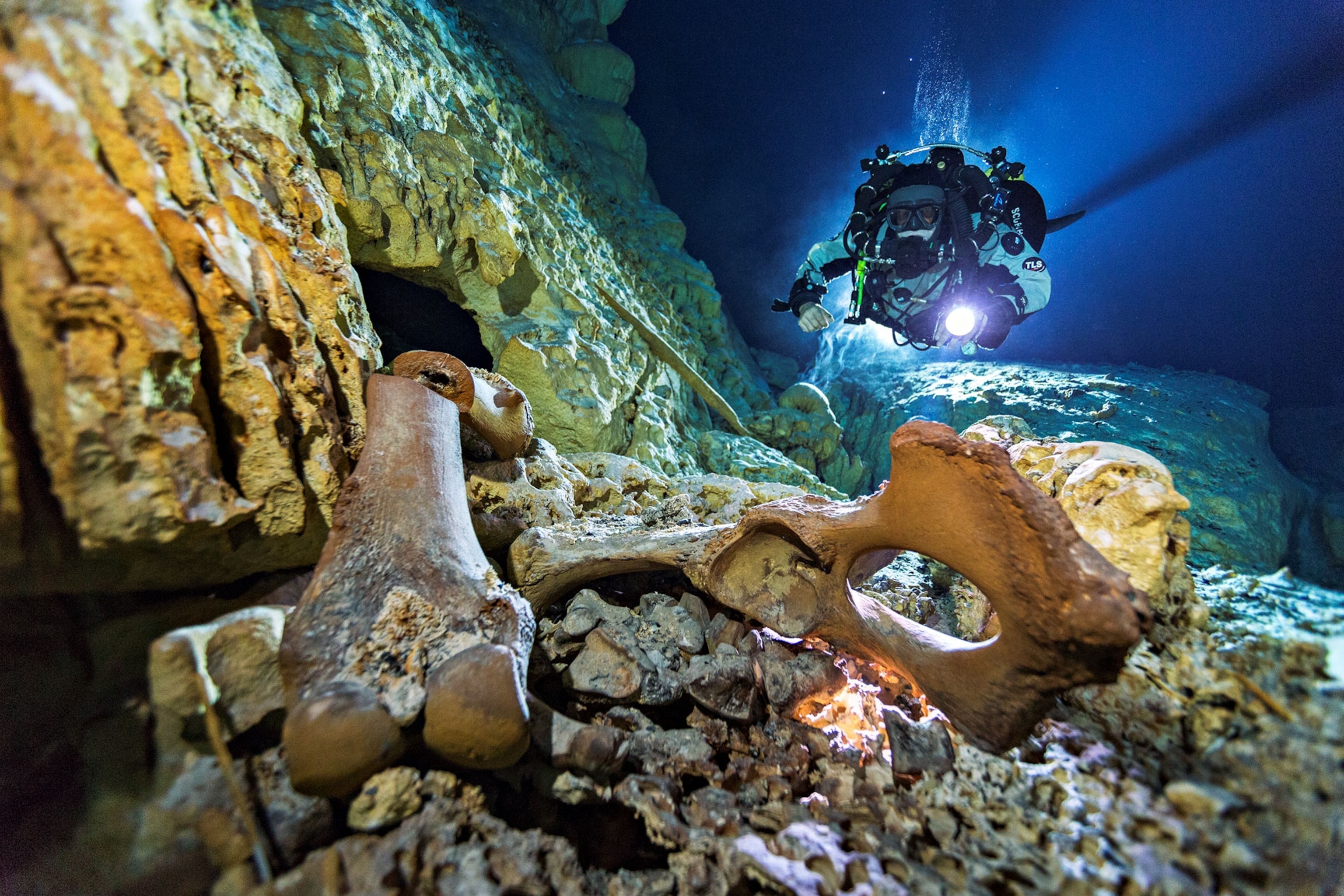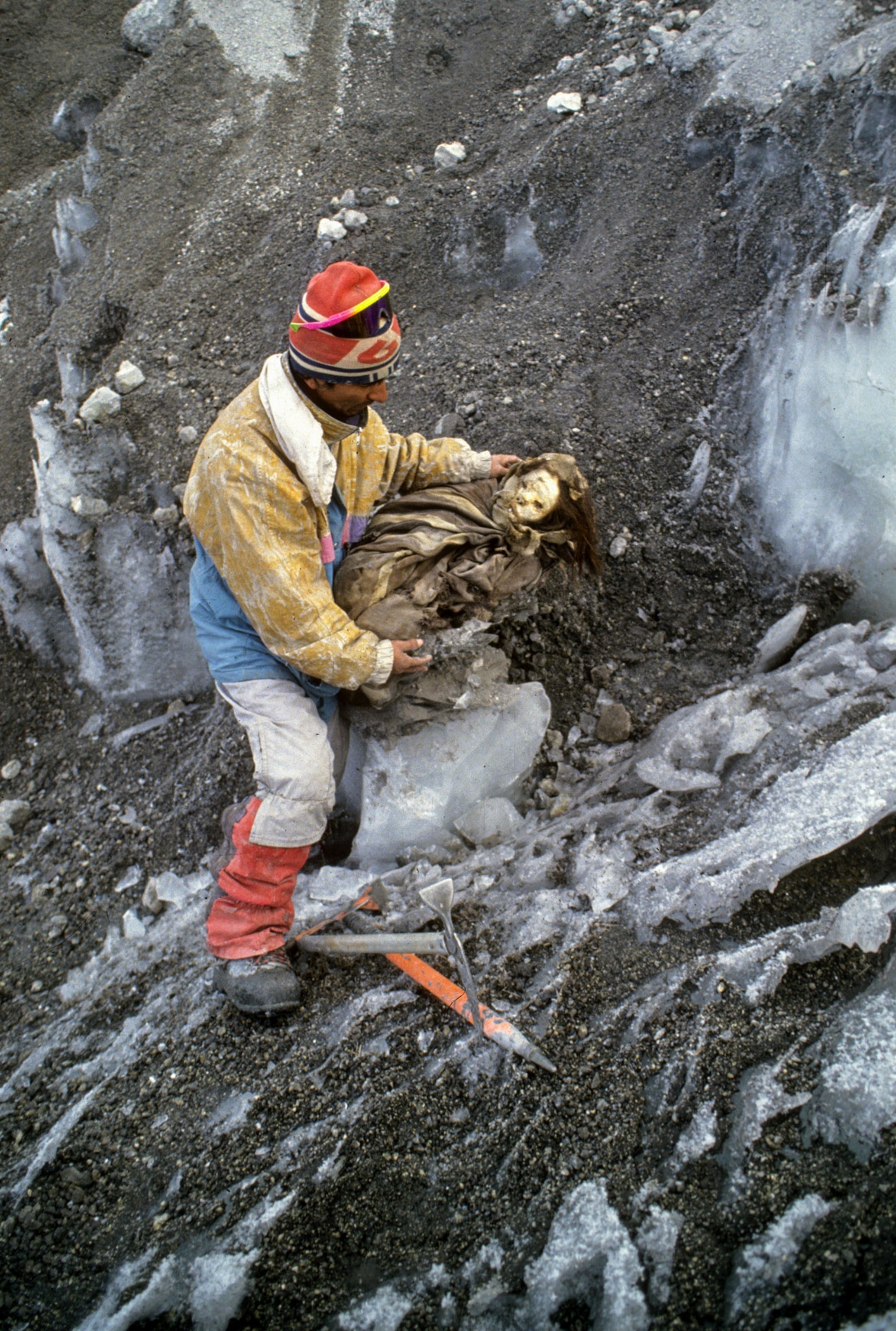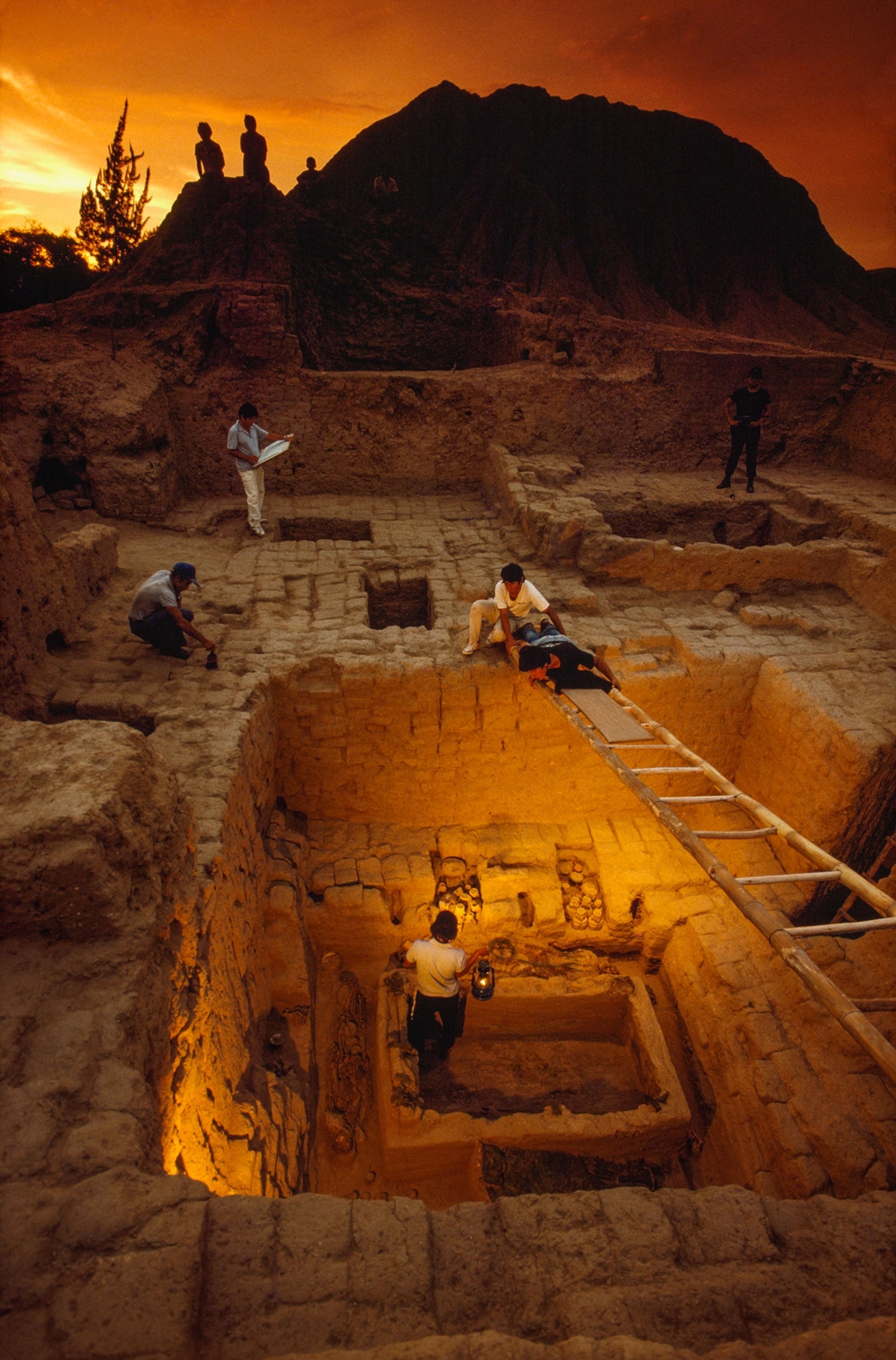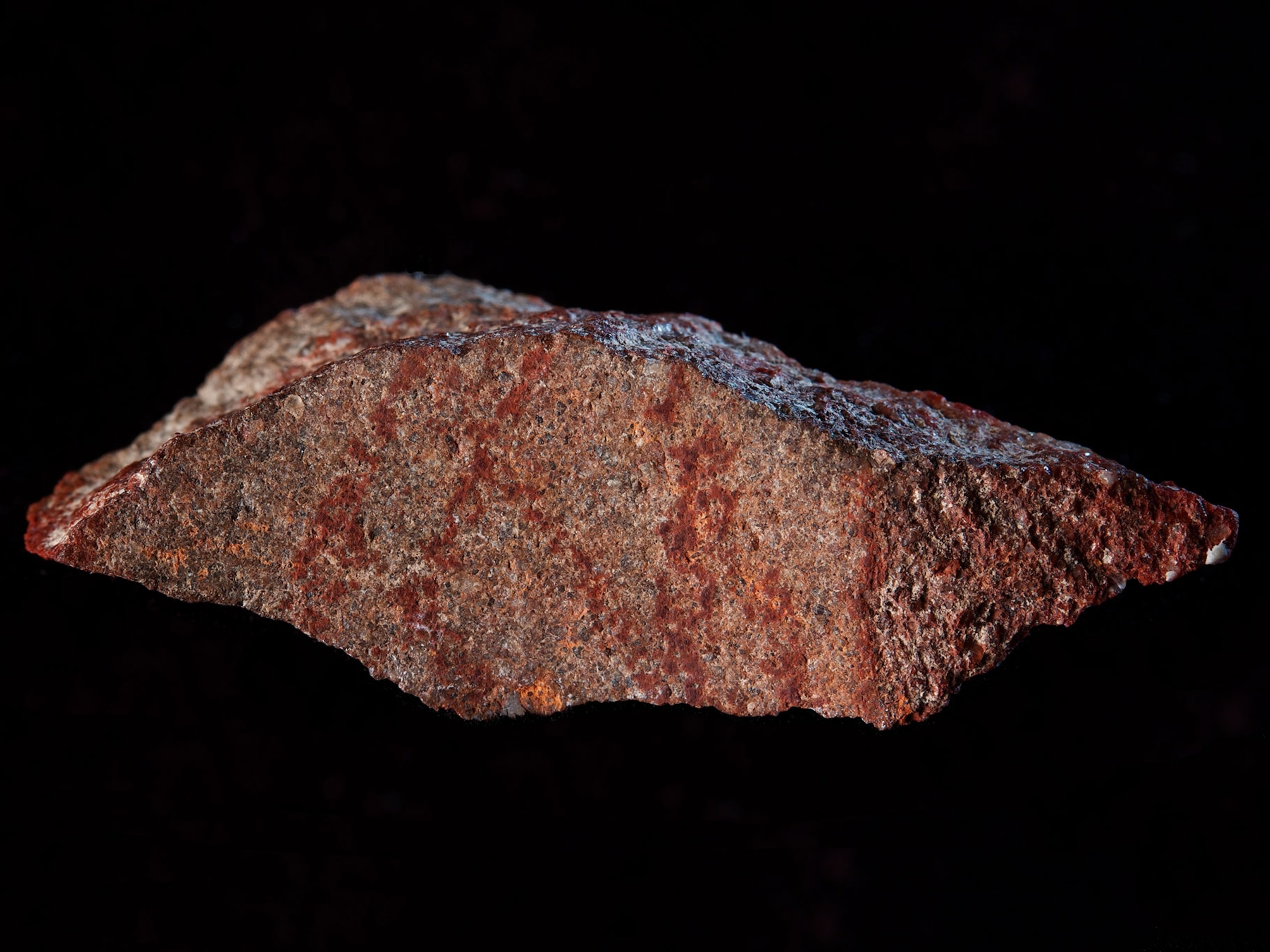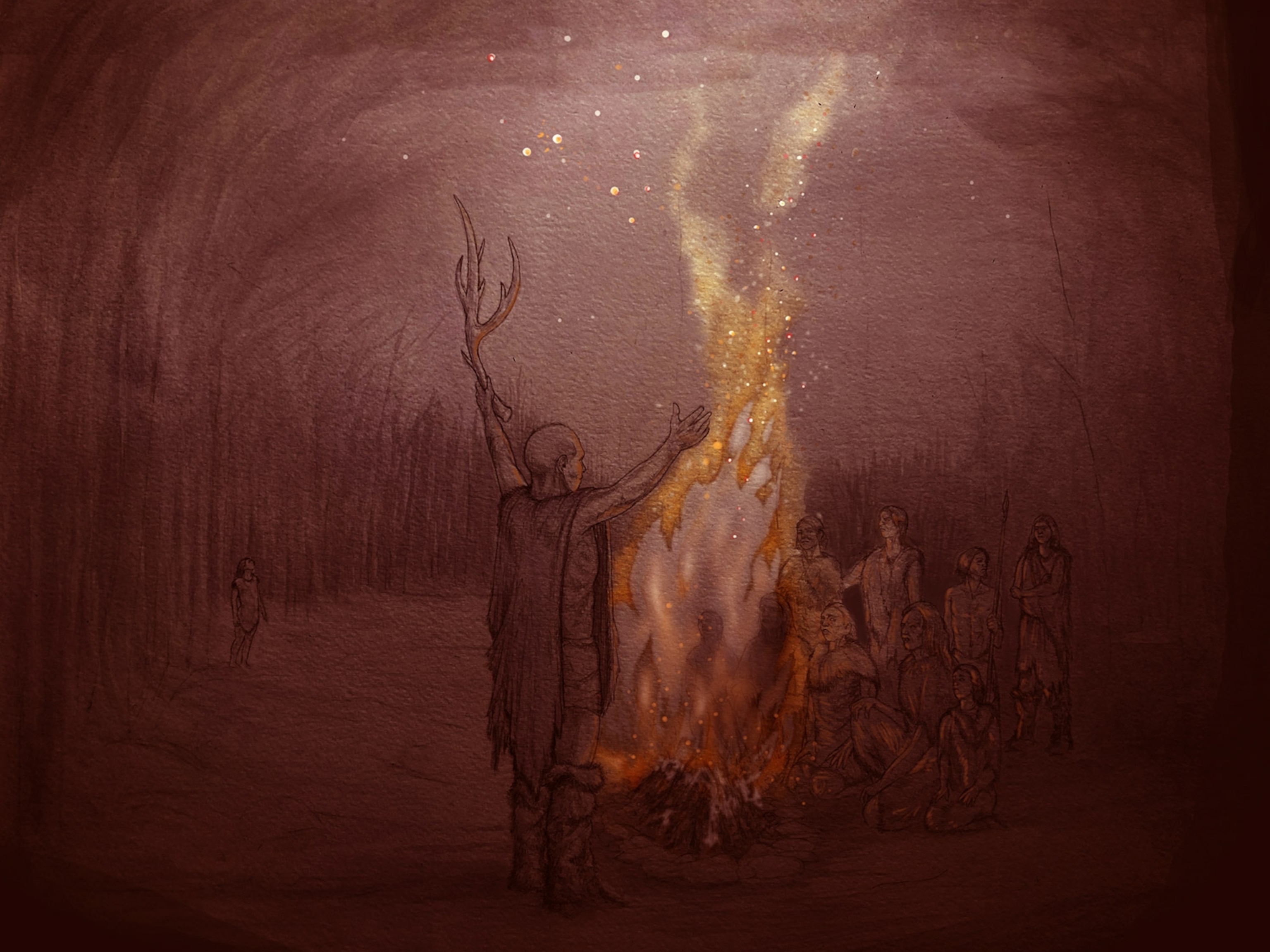Countless caves perch atop the steep-sided mountains of East Kalimantan in Indonesia, on the island of Borneo. Draped in stone sheets and spindles, these natural limestone cathedrals showcase geology at its best. But tucked within the outcrops is something even more spectacular: a vast and ancient gallery of cave art.
Hundreds of hands wave in outline from the ceilings, fingers outstretched inside bursts of red-orange paint. Now, updated analysis of the cave walls suggests that these images stand among the earliest traces of human creativity, dating back between 52,000 and 40,000 years ago. That makes the cave art tens of thousands of years older than previously thought.
But that's not the only secret in the vast labyrinthine system.
In a cave named Lubang Jeriji Saléh, a trio of rotund cow-like creatures is sketched on the wall, with the largest standing more than seven feet across. The new dating analysis suggests that these images are at least 40,000 years old, earning them the title of the earliest figurative cave paintings yet found. The work edges out the previous title-holder—a portly babirusa, or “pig deer,” in Sulawesi, Indonesia—by just a few thousand years.

“In the entrance, there's a little chamber to the right, and it's there—bam,” says archaeologist Maxime Aubert of Griffith University. It's not the earliest cave art ever found. But unlike earlier scribbles and tracings, these paintings are unequivocal depictions of ancient animals, his team reports today in the journal Nature.
The bovines and handprints join a growing array of artwork of similar age that adorns the walls of caves around the world. These paintings mark a shift in how early humans thought about and engaged with their environment—from focusing on survival and daily mundane necessities to cultivating what could be the earliest threads of human culture, explains Paleolithic archeologist April Nowell of the University of Victoria.
“I think for a lot of us, that's a true expression of human-ness in the broadest sense of that word,” she says.
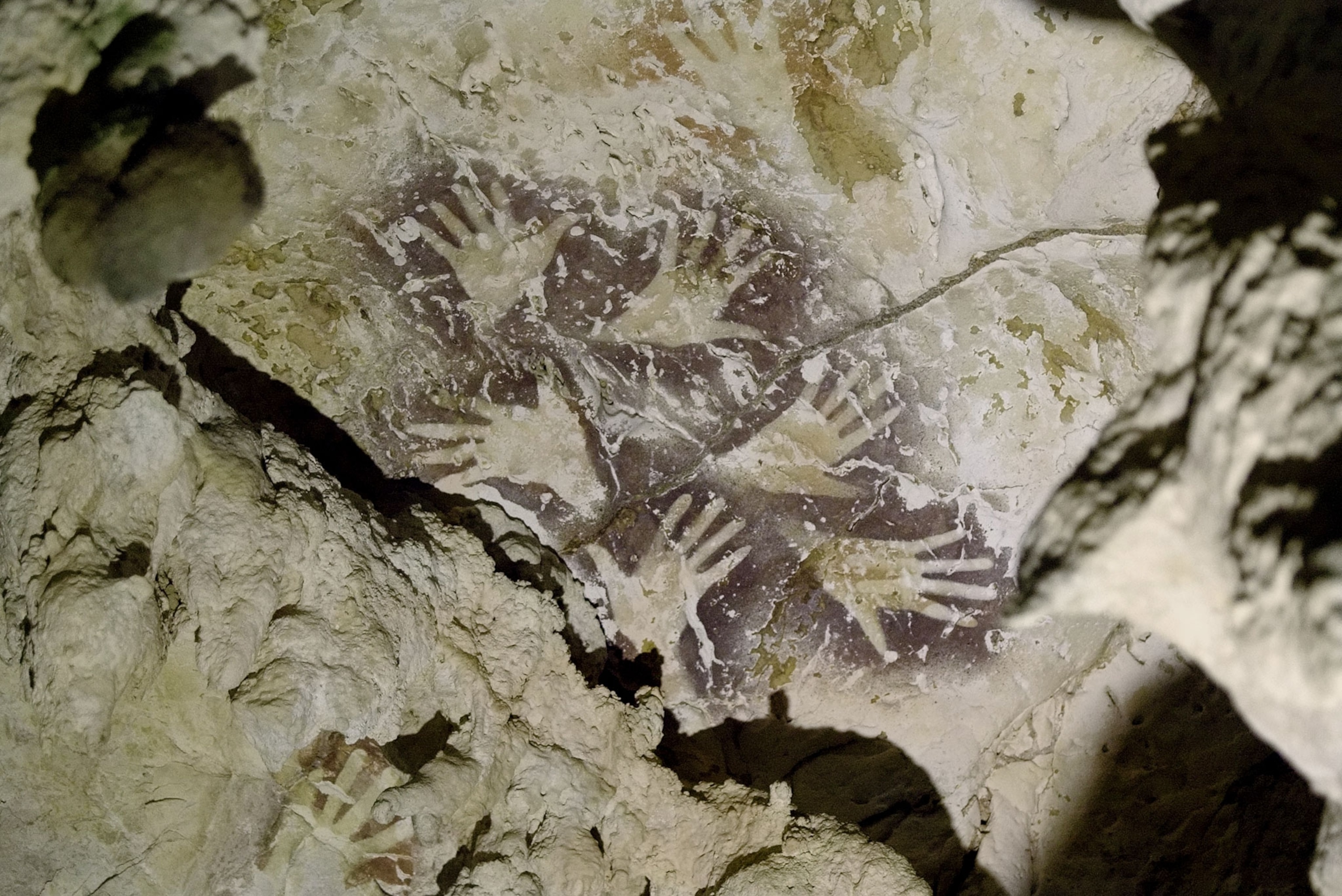
Rocks and radioactivity
Island locals have long known about these paintings, as they encountered the stunning works while hunting for edible bird nests. The artwork was eventually documented in the 1990s and later dated. But many samples were porous, Aubert explains, which notoriously gives ages older than reality. At the time, the team settled on a cautious minimum age of 10,000 years.
Aubert and his colleagues ventured back to the caves in 2016 and 2017 to collect new, nonporous samples and retest the ages using the same method, which relies on the ever-present drip of water. As liquid percolates through the rock and sediments overhead, the water slowly dissolves both limestone and naturally occurring radioactive uranium. It then deposits the substances in calcium carbonate coatings on the cave walls.
Uranium predictably degrades to thorium, and because water leaves this element behind in its wending path, scientists can measure the ratio of uranium to thorium to determine various features' ages. In total, the team analyzed 15 calcium carbonate samples from six cave sites, drawing from deposits on top of and beneath the drawings that sandwich the art in time.
The new dates seem to define three stages of Paleolithic artistry in the region, and they show a shift from depicting animals to showcasing the human world.
“We didn't expect that at all,” Aubert says.
The oldest phase is made up of reddish-orange images starting sometime between 40,000 to 52,000 years ago, including the bursts of color outlining ancient hands and the bovid-like animals. Dark purple images mark a second period timed to around 20,000 years ago. Many hands make up this phase, but they're ornamented with tattoo-like dots, dashes, and lines. Vine-like tendrils connect the hands together. Both red and purple pigments seem to be made of the same material, one may just be more weathered than the other, Aubert notes.
A slim, mulberry-colored human figure dating to roughly 13,600 years ago leads the art into the third phase. This period is dominated by black pigmented geometric shapes and stick figures engaged in activity, such as dancing, boating, and hunting. Found elsewhere across the island of Borneo, these black pigment drawings are thought to be just a few thousand years old.
Standing among the greats
The new dates are exciting but perhaps not surprising, says archaeologist Nicholas Conard of the University of Tübingen. Conard, who was not involved in the latest study, led the investigations into the Hohle Fels cave of southern Germany that discovered, among many other finds, a headless woman figurine dating to at least 35,000 years ago. In 2009, when the find was announced, it was arguably the earliest rendering of the human form.
But Conard has long anticipated the discovery of other ancient cultural centers: “Why would there only be one place on the planet Earth where all this stuff comes from?”
Sure enough, signs of the early beginnings of art around the world has grown in recent years. Smatterings of supremely old evidence include a 73,000-year-old hashtag-like doodle from South Africa, as well as 65,000-year-old geometric shapes and hand outlines from Spain that may have been made by Neanderthals. (Learn more about the origins of art.)
With their new dates, the Borneo depictions join a rich period that seems to mark the beginning of true cave painting around the world. The impressive charcoal menagerie of southern France's Chauvet-Pont-d'Arc Cave dates to roughly 36,000 years ago; hand outlines and simple red discs of Spain's Castillo cave date to more than 40,800 years old. And just a short boat ride away from Borneo are the red handprints and portly pig-deer of Sulawesi that are as old as 39,900 years. There's also a variety of Australian art that could come from this time period, but it has proven more difficult to date than the limestone works.
As these varied regions gain more attention for their cave art, Nowell says, “I think the picture is going to change quite a bit.”
Mysterious origins
What sparked this apparent global artistic movement remains unknown. In Europe, art seemed to flourish soon after early modern humans arrived, but evidence for humans in Southeast Asia predates the ancient artists by 20 to 30 thousand years. As Aubert notes, the movements seem to accelerate during the last glacial maximum, and he speculates this change in climate somehow forced people into closer groups, speeding along cultural innovation.
But Conard is not convinced. “The way the climatic variations play out is so different in the different parts of the world,” he says. “In the world of hunters and gatherers in the Pleistocene, there's a lot of real estate,” he adds, so when the climate changes, there are still many places for people to go. When interpreting these changes, he says, context is key.
It's also possible that older rock art didn't survive the passage of time, Nowell suggests, especially if the work was scrawled on surfaces that were more exposed to the elements. Or perhaps earlier humans weren't inspired by the cave's blank canvas, she adds. Ochre crayons date back over 200,000 years—and scientists have ascribed many more mundane purposes to the colorful pigments, from sunscreen to adhesive.
For now, researchers are continuing to track down these cultural threads around the world, and with each new find, they grow more attuned to the past.
“Once we start to find these behaviors and these kinds of images,” Nowell says, “there's something that really connects us to these people and how they saw the world around them.”



